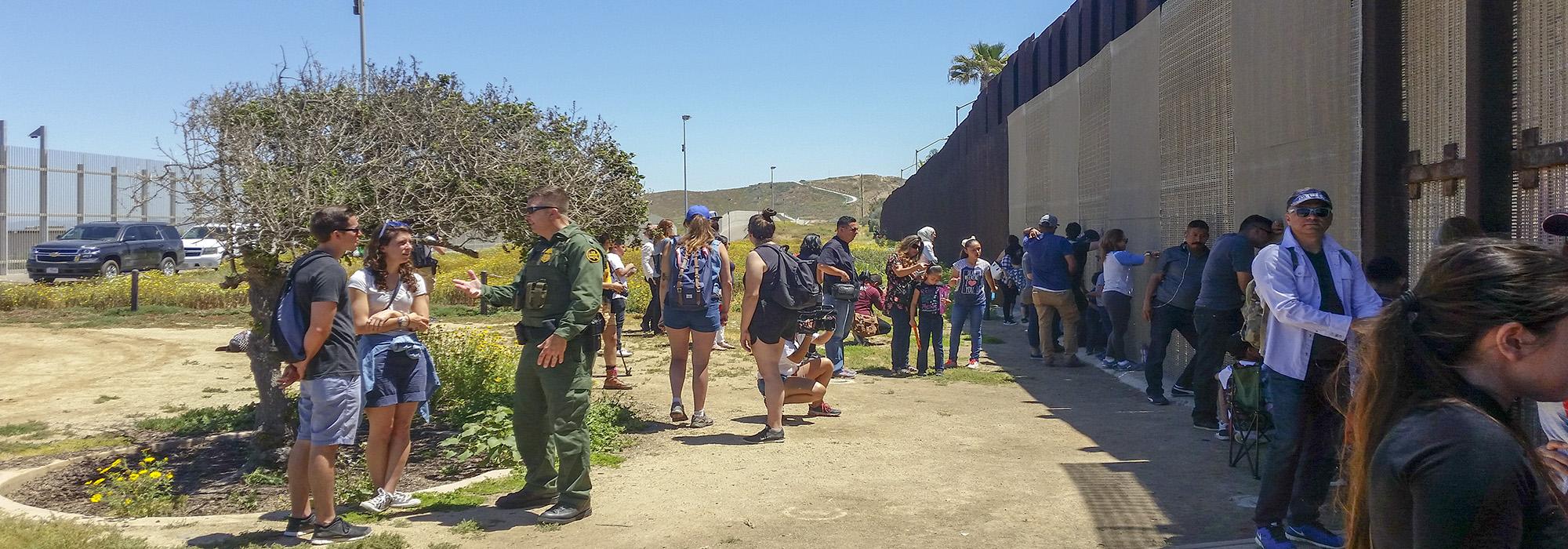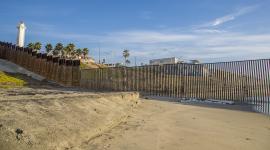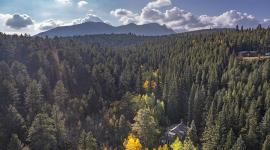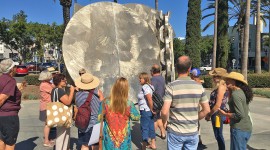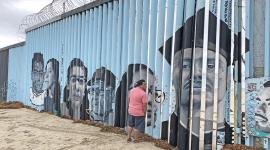Positive Developments at Friendship Park
Located at the westernmost end of the U.S.-Mexico border where San Diego, California, meets Tijuana, Mexico, Friendship Park and Monument Mesa is an important bi-national cultural landscape. Friendship Park, featured in The Cultural Landscape Foundation’s Landslide 2021: Race and Space report, was established on August 18, 1971, in a ceremony that featured First Lady Pat Nixon, to demarcate the physical location of the international boundary line and provide a gathering space for visitors to the border. The area includes a marble obelisk nine feet tall that was erected by the U.S. government as a boundary marker in 1851. In 1974 the marble monument was listed in the National Register of Historic Places. Friendship Park and the co-joining park “Parque de la Amistad” remained an important bi-national meeting location for families and friends separated by the border fence.

Similar to bi-national parks located along the northern border, people travel hundreds of miles to see their loved ones in person. These northern border parks were heavily used as a place people could visit with loved ones during the novel coronavirus pandemic when the Canada-U.S. border was closed. By contrast, on the southern border the bi-national portion of Friendship Park, now located between two eighteen-foot-tall walls covered in wire mesh with ¼” openings for people to touch fingertips, remains closed. In fact, all that’s left of a once vibrant park is a half-circle of concrete, Pat Nixon’s tree and remnants of a construction impacted bi-national native plant garden. Prior to closure in February 2020 visitation restrictions were continually increased eliminating weekly and annual events. Long lines were common and a maximum capacity limitation of ten people meant many who traveled from far away were not able to see their loved ones in the four-hour window it was open on Saturdays and Sundays.
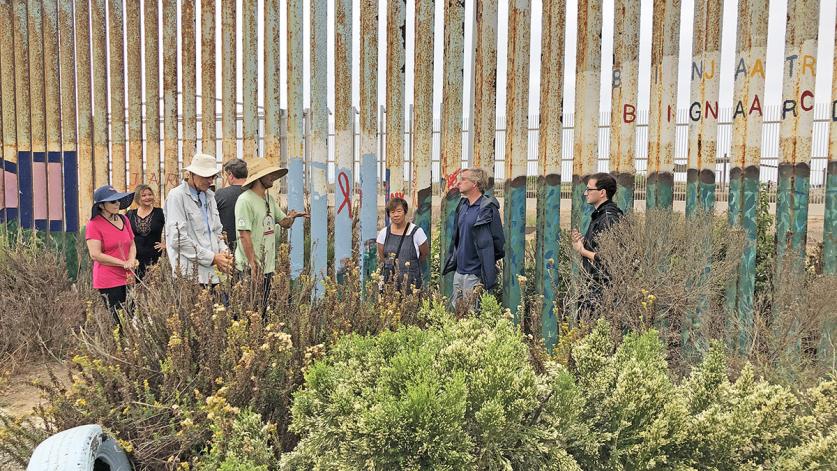
Unlike other cultural, historic, and environmental resources found in our country, border projects are exempt from the National Environmental Policy Act (NEPA) and the 37 different laws and acts designed to protect such resources. As part of the 2005 REAL ID Act enacted under President George W. Bush’s administration, language was added to exempt border projects from the NEPA process. That language remains active through the issuance of waivers by the Department of Homeland Security. Once issued, those waivers never expire. It is important to note that even with NEPA in place, projects can still remove such resources but to do so requires a full public disclosure of what is being lost. Prior to recent border security upgrades there were trees, lawn, a vibrant bi-national native plant garden, access to the historic monument, undisturbed Kumeyaay Native American sites, and a U.S. flag and marker matching ones on the Mexico side.
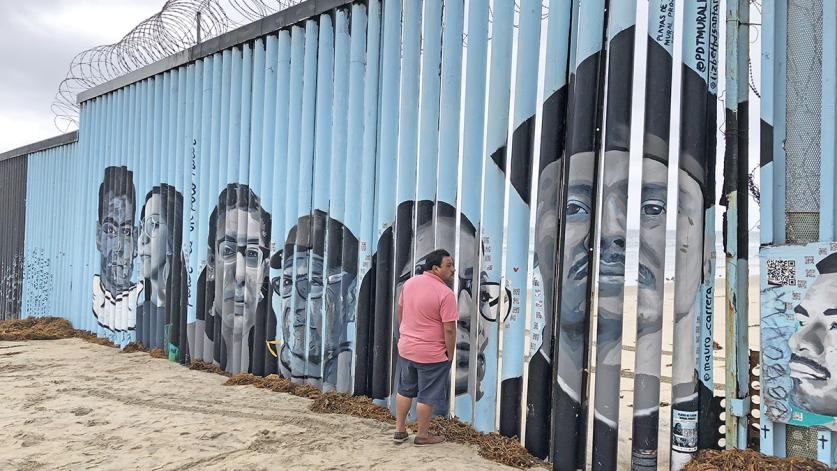
On July 27, 2022, the Friends of Friendship Park and allied design professionals met with Customs and Border Protection for a stakeholder meeting. That meeting resulted in the announcement that the existing eighteen-foot-tall walls would be replaced with 30-foot-tall walls and that there was no commitment for funding to reopen the park. The 1851 original monument will remain as it has since 2011, relegated to the Mexico side of the wall and no longer visible from the United States. With construction set to begin in early August, local legislators and city officials requested a 120-day pause in construction to provide meaningful stakeholder input regarding the wall design and resource protection.
On August 4, advocates got good news when from the U.S. Customs and Border Patrol (CBP) via this press release:
CBP has paused all primary and secondary border barrier construction in the area immediately surrounding Friendship Park, a half-acre binational park located along the United States-Mexico border in the San Diego–Tijuana region, to engage with community stakeholders and to discuss the planned construction to rebuild barrier sections requiring repair in this area. CBP is committed to preserving access to Friendship Park and, upon completion of the barrier construction in the Friendship Park area, CBP is committed to opening the park a minimum of two days each month, allowing members of the public back into the park for the first time since 2019.
“We have heard concerns about the project as currently planned, and it is important to me to be responsive to the local community on this issue. I look forward to continued conversations with the community regarding this project during the pause,” said CBP Commissioner Chris Magnus.
The Friends of Friendship Park issued a press release that included the following statement:
“We consider this a step in the right direction,” said John Fanestil, convener of the Friends of Friendship Park. “We look forward to hearing from CBP and US Border Patrol staff. We hope that our request for a pause of 120 days will be honored, and that this will lead to authentic conversation and collaboration with the many stakeholders of Friendship Park.”
This recent news is a positive development that Friendship Park advocates can buttress.
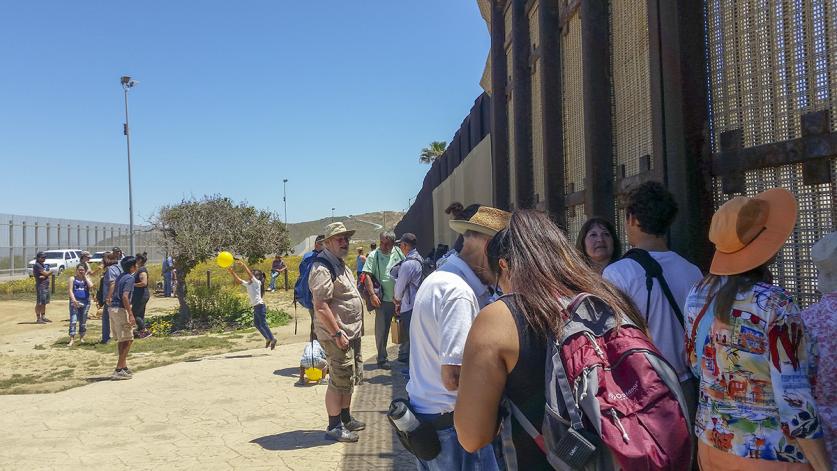
Write or Call Congressman Juan Vargas and Senators Alex Padilla and Dianne Feinstein and encourage them to continue advocating for Secretary of Homeland Security Alejandro Mayorkas to pause construction and support the re-opening of the park.
2244 Rayburn House Office Building, Washington, D.C. 20151
Phone: (202) 225-8045
E: https://vargas.house.gov/contact
112 Hart Senate Office Building, Washington, D.C. 20510
Phone: (202) 224-3553
E: https://www.padilla.senate.gov/sontact/contact-form/
331 Hart Senate Office Building, Washington, D.C. 20510
Phone: (202) 224-3841
E: https://www.feinstein.senate.gov/public/index.cfm/e-mail-me
Donate to Friends of Friendship Park to support their efforts to renew the park’s purpose as an inviting, bi-national public park.



